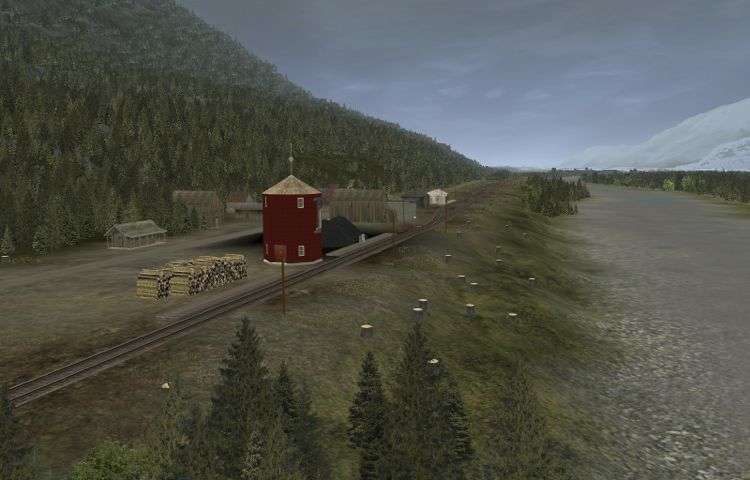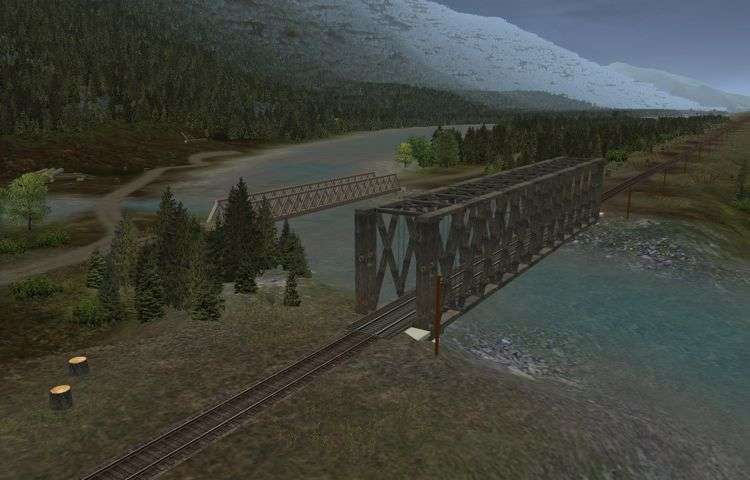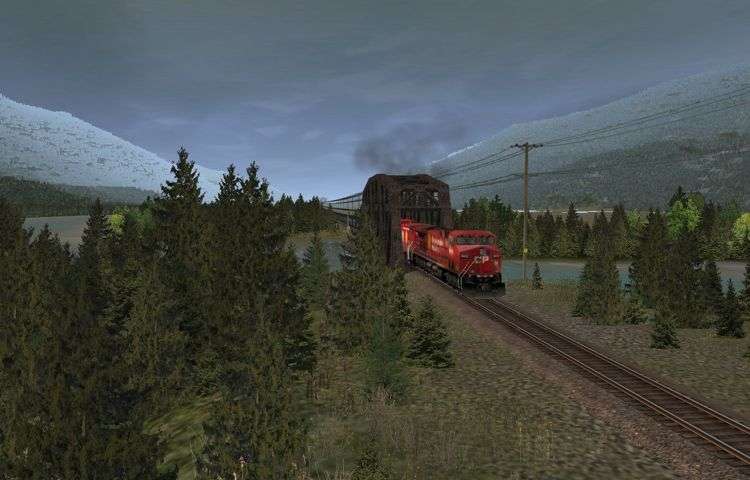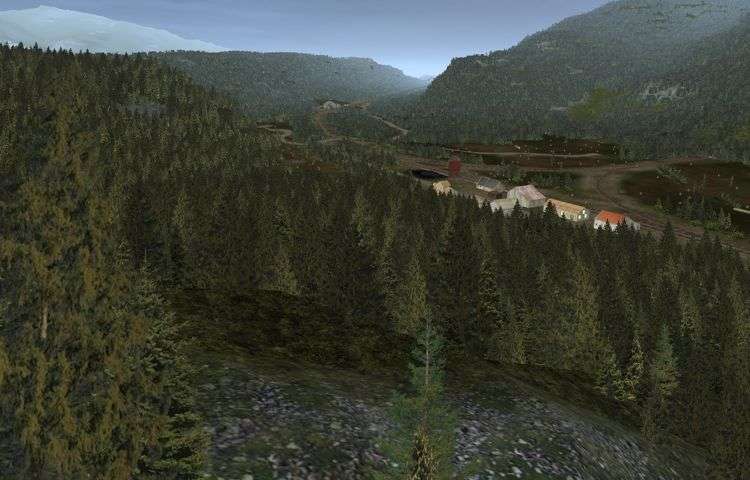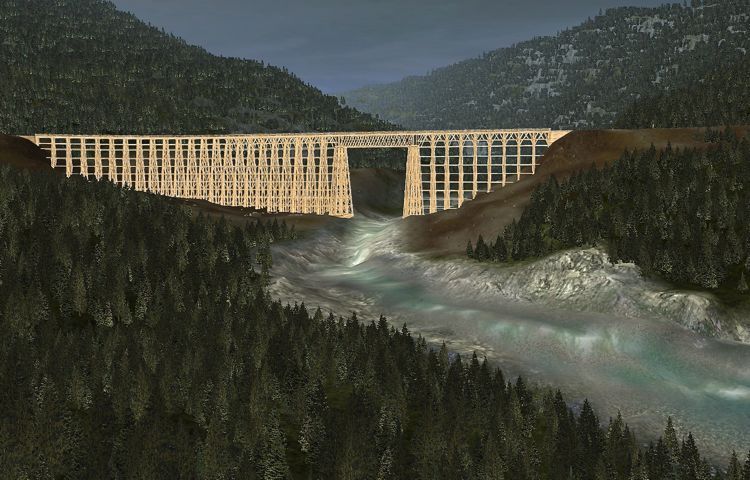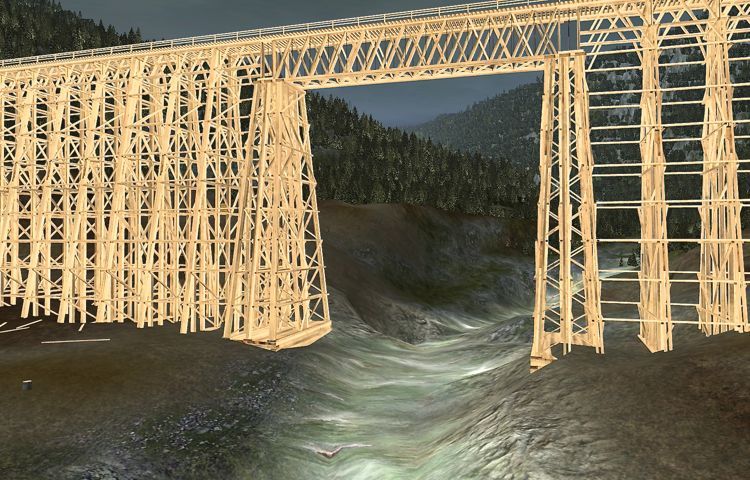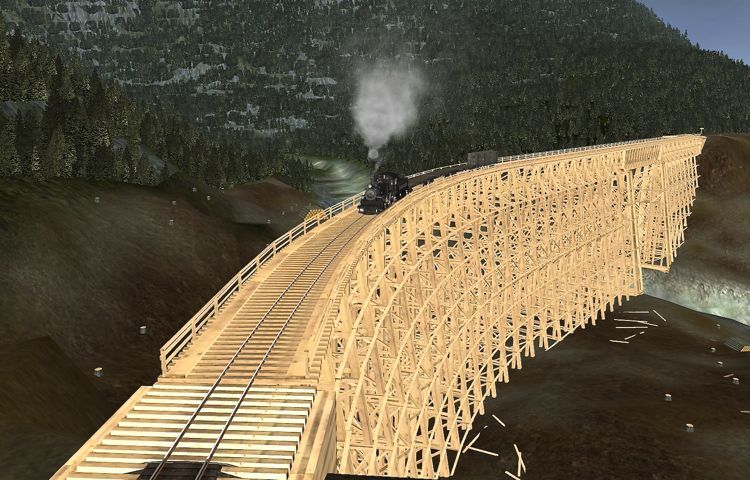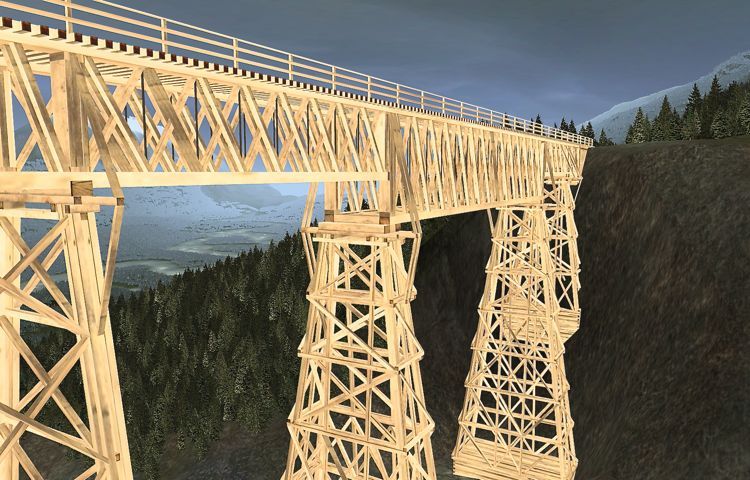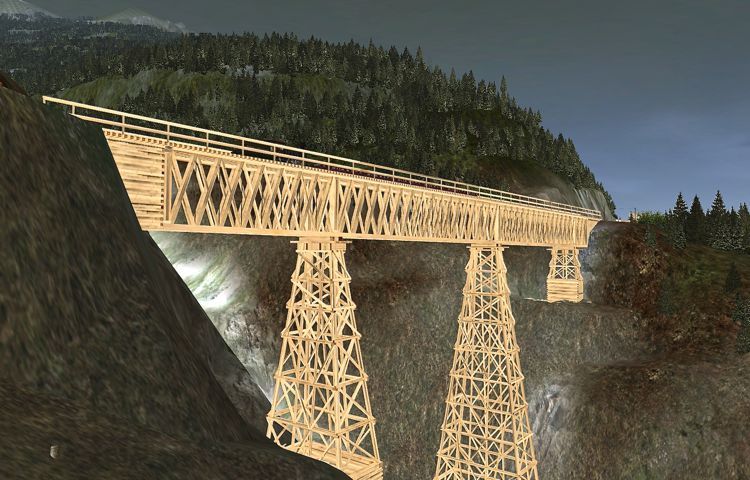Ottertail Trestle
Ottertail River flows out of the Emerald Range to the east. To traverse it the CPR had to build a trestle 705 feet long
and 122 feet high. For its time the trestle was a technical as well as an aesthetic masterpiece. To save money
and to compete the railway in as little time as possible to avoid bankruptcy, the CPR used the abundant timber in
the surrounding forests recognizing that the structure would be high maintenance and would have a short life span.
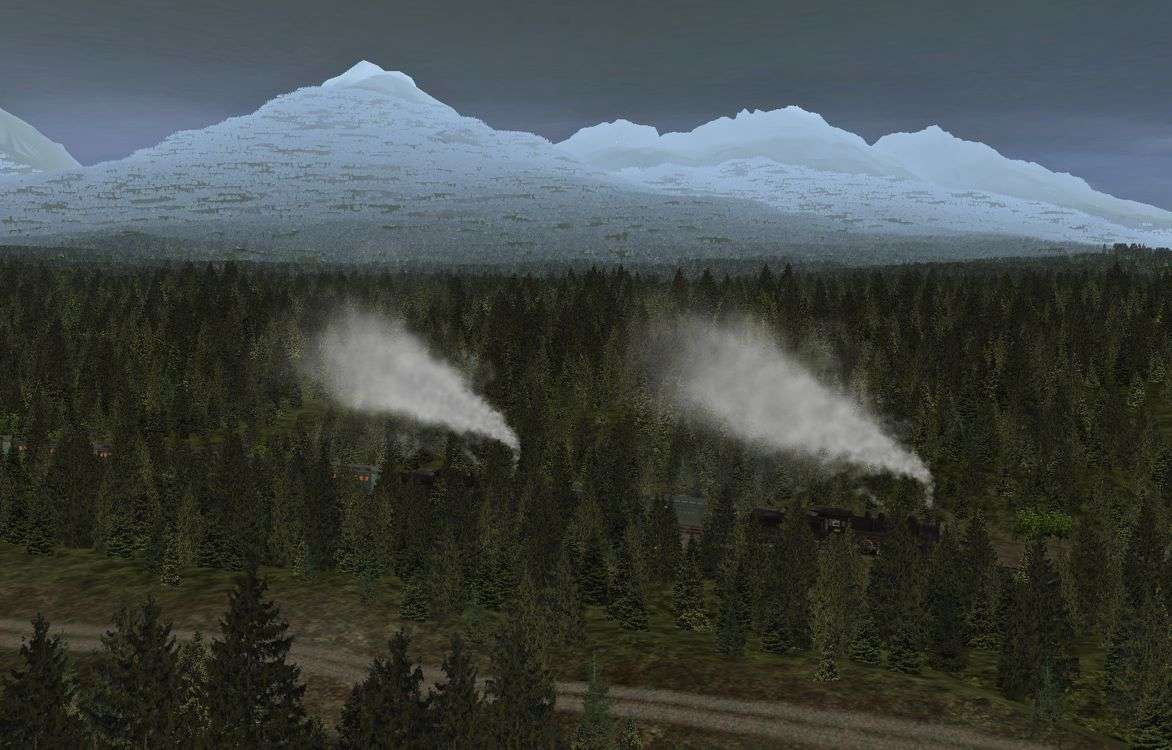
Approaching Ottertail Trestle from Field in 1887 with the Emerald Range in the background.
The Ottertail Bridge featured a single Howe truss span in the center over the river itself framed on either side by
towering trestle works.
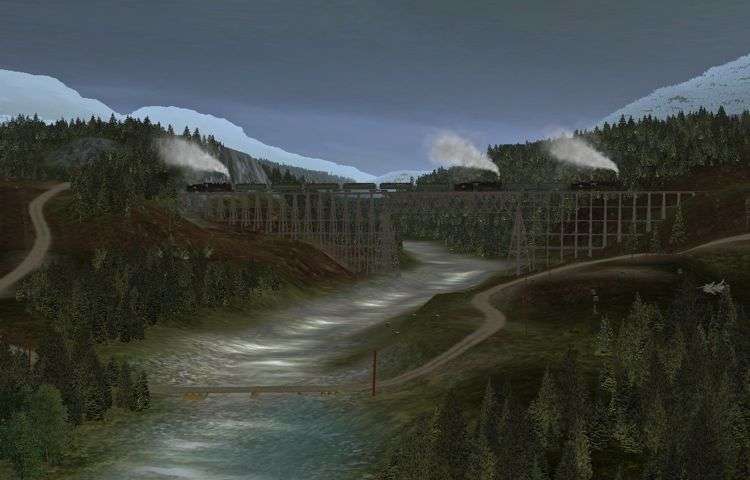
Ottertail Trestle over the Ottertail River.
The CPR dismantled the bridge in 1922 salvaging 295,000 board feet of timber. A back road leading west
from Field follows the original railway grade to the site of the Ottertail Trestle. The earth works of the
original trestle can be seen east of the much less spectacular plate girder bridge used
today on the diversion.
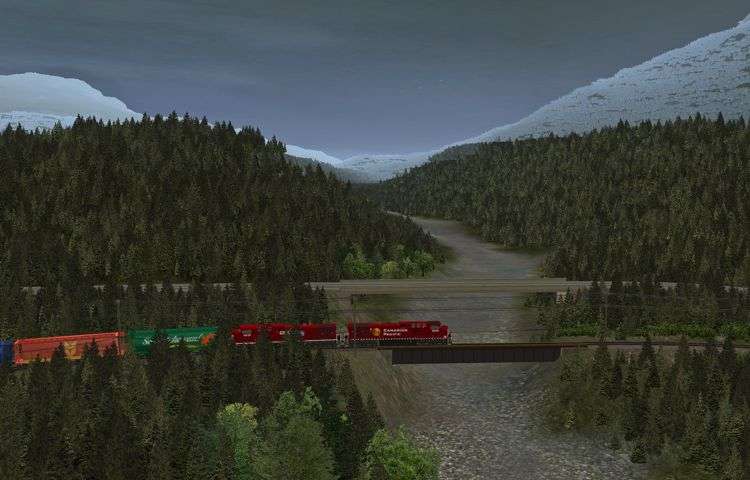
The plate girder bridge over the Ottertail River on the Ottertail Diversion is still in use today. Shown is the
Trans Canada Highway Bridge in the background, and still further back the site of the original Ottertail Trestle.
For more information visit: http://www.doug56.net/MBC_1887_TS12_Route/page90.html
Cayden
Ottertail River flows out of the Emerald Range to the east. To traverse it the CPR had to build a trestle 705 feet long
and 122 feet high. For its time the trestle was a technical as well as an aesthetic masterpiece. To save money
and to compete the railway in as little time as possible to avoid bankruptcy, the CPR used the abundant timber in
the surrounding forests recognizing that the structure would be high maintenance and would have a short life span.

Approaching Ottertail Trestle from Field in 1887 with the Emerald Range in the background.
The Ottertail Bridge featured a single Howe truss span in the center over the river itself framed on either side by
towering trestle works.

Ottertail Trestle over the Ottertail River.
The CPR dismantled the bridge in 1922 salvaging 295,000 board feet of timber. A back road leading west
from Field follows the original railway grade to the site of the Ottertail Trestle. The earth works of the
original trestle can be seen east of the much less spectacular plate girder bridge used
today on the diversion.

The plate girder bridge over the Ottertail River on the Ottertail Diversion is still in use today. Shown is the
Trans Canada Highway Bridge in the background, and still further back the site of the original Ottertail Trestle.
For more information visit: http://www.doug56.net/MBC_1887_TS12_Route/page90.html
Cayden
Last edited:

